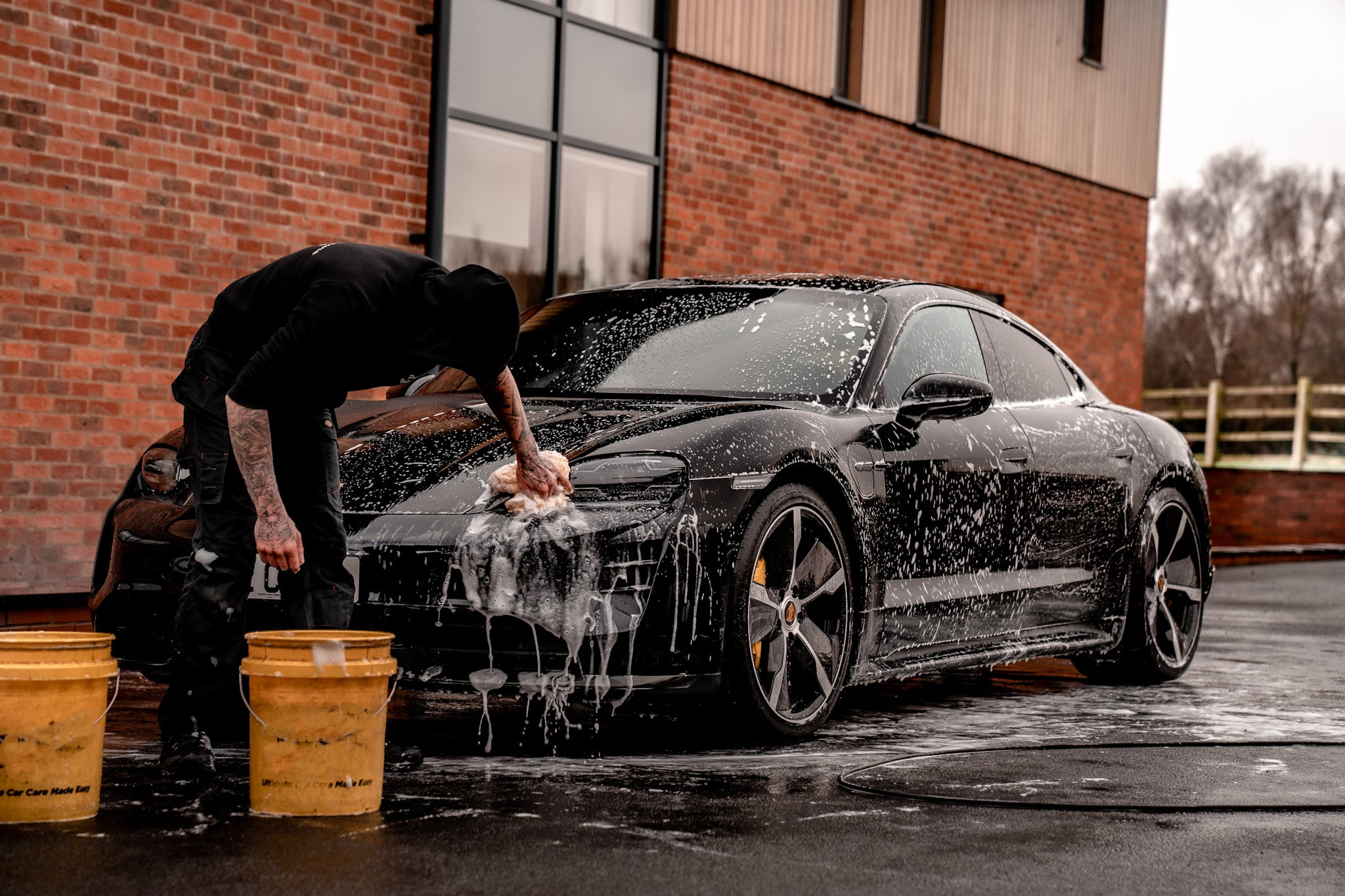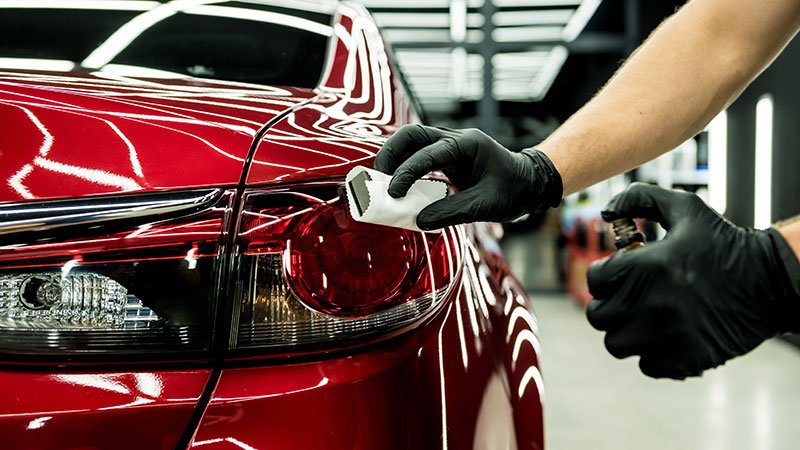Introducing the Science Behind Ceramic Coatings: Exactly How Does It Job and Why Is It Superior to Typical Options?
Ceramic coatings have actually been getting popularity in various markets for their extraordinary performance and resilience. Comprehending how ceramic layers work and why they exceed conventional alternatives is crucial for those looking for to improve the longevity and strength of their materials.
The Chemistry of Ceramic Coatings
In comprehending ceramic coverings, delving right into the complex chemistry behind their composition is crucial for understanding their functionality and longevity. Ceramic finishes are largely made up of silicon dioxide (SiO2), which develops a safety and strong layer when related to various surfaces. This chemical structure gives phenomenal resistance to warm, chemicals, and corrosion, making ceramic coatings extremely searched for for a wide variety of applications.
The chemistry behind ceramic finishings involves the formation of covalent bonds in between silicon and oxygen atoms, creating a stiff network that boosts the finish's strength and durability. Furthermore, the visibility of other aspects such as aluminum, titanium, and zirconium more improves the layer's buildings, providing boosted solidity and adhesion to surfaces.
Comprehending the chemical make-up of ceramic coverings enables the modification of formulations to match particular needs, whether it be for vehicle, commercial, or residential objectives. By utilizing the power of chemistry, ceramic coatings proceed to lead the way for exceptional security and efficiency in various industries.
Benefits of Ceramic Coatings

As an outcome, ceramic finishings make cleansing and keeping surface areas much less complicated and less lengthy. Generally, the plethora of benefits provided by ceramic finishes make them a premium option compared to standard layer methods.
How Ceramic Coatings Bond
Ceramic finishes bond to surfaces through a procedure that includes molecular bond and chemical communications. When a ceramic layer is put on a surface area, it forms a solid bond by chemically sticking to the surface area at a molecular level. This bond is produced with the development of covalent bonds, which are durable and extremely solid. The ceramic covering's molecules permeate the pores of the surface, producing a tight grip that withstands splitting up.
Additionally, the chemical interactions between the ceramic coating and the surface area better boost the bond. ceramic coatings san jose. These communications permit the ceramic finish to produce a constant and seamless layer externally, giving exceptional security and longevity. Unlike traditional layers that might remain on the surface area without completely bonding, ceramic finishings produce a permanent bond that is immune to chemicals, UV rays, and extreme environmental problems

In significance, the bonding system of ceramic coverings ensures a effective and lasting safety layer that outperforms typical finish choices. This remarkable bond contributes to the durability, scrape resistance, and long life of ceramic layers, making them a favored selection for different applications.
Durability of Ceramic Coatings
The phenomenal long life of ceramic finishes stems from their durable molecular attachment and chemical interactions with surface areas, making sure a sturdy safety layer that surpasses traditional covering choices. Once applied, ceramic coverings create a strong bond with the substratum, developing a resilient barrier versus numerous environmental stressors such as UV radiation, chemicals, and abrasions. This bond is so secure that it can hold up against the rigors of everyday usage without wearing away or degrading swiftly.
Unlike conventional finishes that might degrade gradually, ceramic layers maintain their stability for an extensive period, offering resilient defense for the underlying surface area. The strong molecular framework of ceramic layers resists cracking, fading, and peeling, making sure that the surface area stays secured and cosmetically pleasing for years to find. This longevity not just minimizes the demand for frequent reapplications yet also saves money and time in the future. Overall, the outstanding longevity of ceramic coatings makes them a superior selection for safeguarding a large range of surfaces in various applications.
Ceramic Coatings Vs. Standard Choices
In contrast to conventional finishing techniques, ceramic coatings use you can try here an unique mix of longevity and safety capacities that establish them apart in various surface security applications. Standard choices such as wax or sealants offer a momentary layer of defense that can wear away quickly, requiring frequent reapplication. On the various other hand, ceramic coatings form a strong bond with the surface, creating a semi-permanent or permanent obstacle that is very immune to abrasion, chemicals, UV rays, and severe temperature levels.
Additionally, ceramic finishes use remarkable hydrophobic homes compared to conventional coverings. The hydrophobic nature of ceramic coverings causes water to grain up and roll off the surface area, bring dust and pollutants with it. This self-cleaning impact assists to keep the surface's tidiness and gloss for extended durations, lowering the requirement for frequent upkeep.
In addition, ceramic coatings have a thicker layer contrasted to conventional options, supplying improved scratch resistance and defense against small effects. This resilience ensures resilient performance and helps maintain the aesthetic allure of the treated surface area for an extended period.
Final Thought
To conclude, the scientific research behind ceramic finishes lies in their chemical make-up and bonding properties, making them premium to standard alternatives. The benefits of ceramic coatings include increased durability and security for surface areas. By understanding just how ceramic coverings job and their advantages over standard options, one can make educated choices when considering finishing alternatives for various applications.
Unlike traditional layers that might sit read what he said on the surface without fully bonding, ceramic finishes produce a permanent bond that is resistant to chemicals, UV rays, and rough environmental problems.
The extraordinary long life of ceramic coatings stems from their robust molecular bond and chemical communications with surface areas, guaranteeing a long lasting safety layer that goes beyond traditional covering read what he said options.Unlike typical coverings that might degrade over time, ceramic coverings preserve their stability for an extensive period, providing resilient protection for the underlying surface.In contrast to traditional finishing methods, ceramic finishes provide an unique blend of longevity and protective abilities that set them apart in different surface area protection applications. By recognizing exactly how ceramic finishes work and their advantages over conventional options, one can make educated choices when considering covering options for numerous applications.